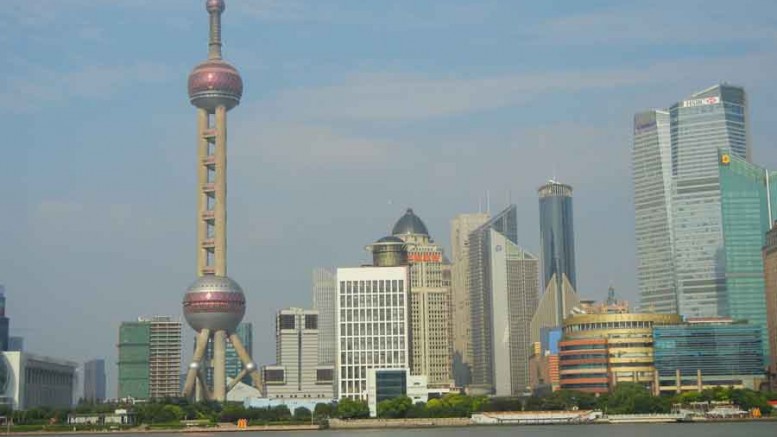If you manage a mining company with assets abroad, sooner or later you will have to consider whether you are going to staff the key positions with local nationals, or send someone from the home office.
Earlier this year, we at The Human Well wrote about employee benefits for the mobile workforce (“How to craft benefits packages for globe-trotting employees,” T.N.M., Jan. 14–20/13). Now, we expand that discussion into the other areas that employers must consider when transferring staff — particularly younger managers — into positions outside of Canada.
“Now let me make sure I understand this offer: you are going to send me to another part of the world to work, cover all of my relocation expenses and pay me more than I would earn at home . . . when do I start?” may have been the reaction in the past from a baby boomer to an offer to go and work abroad, but don’t expect the same response from their kids.
These are children of the generation that put a McDonalds and Starbucks on every corner that helped homogenize the world. They have already been everywhere, travelling with their parents; during their gap year; or as part of their education.
The cachet of working abroad no longer exists.
Later generations’ values are different and lie in community, a safe environment and raising children close to support systems that accommodate dual parental careers. Consequently, the same relocation arrangements, compensation systems and assistance programs that were used with their parents are not going to work.
An international company will have experienced management at the top who have lived and worked abroad, and are able to make better-informed international decisions.
Companies that try to do without this depth of experience (say, by substituting foreign assignments with travel and video conferencing) will likely see subpar performance. At lower levels in the organization, organizations will need the best-available technical skills to get the job done in the most efficient and productive way, and these may only be available in another country. Using mobile talent is a requirement today at all levels in the organization.
Globalization has narrowed cultural gaps and cost-of-living differences, and the Internet age has further contributed to a more globally aware workforce. There are few attractions for a young family that takes on an international work assignment. Media and peer pressure place enough stress on those raising young families, without the added dynamic of foreign schooling, healthcare and social development.
For their baby-boomer parents, an international assignment was appealing because it was well-compensated, with some inconvenience rewarded by later promotions during a long career spent with one employer. And it provided an exciting opportunity for a family to experience another part of the world.
Their children, on the other hand, see fewer tangible rewards coming from overseas assignments, and consider time away from the head office as career idling, especially if to a location that they may have visited already. They also witness few companies attempting to retain an internationally experienced workforce through well-managed career pathing.
So are the best candidates for international assignments single? Well, if you can find someone with the proper level of experience, of course. Or maybe empty nesters with no elderly parents — but will they still have the energy and commitment to drive your project in-line with the demands of shareholders?
If you can’t find the perfect applicant at the ends of the age spectrum, what’s to be done? Here’s a checklist of ideas that may be helpful when it comes time to building experienced, international bench strength:
1. Recruitment — The days of reaching out to headhunters to solve mid-level hiring problems are disappearing. The reputable ones are turning away searches that appear difficult, and international assignments certainly fall into that bracket. To attract a young family, you will need to answer every single question that they have about the location, the assignment and so on. The one-page brief traditionally given to the recruiter is not enough.
A web-based solution, where candidates can choose you using the brand and culture that your company promotes, is rapidly becoming the proven approach. However, don’t assume that your human-resources person working LinkedIn for a few hours a day will solicit the right candidate. Whether the appointment is a single manager or a group of skilled workers, they could be high risk for your company, and you would want the best possible candidates to minimize failure. Spending the time to discuss the most cost-effective and productive method of recruiting mobile talent with an expert or a recruiter that understands this trend will be worthwhile.
2. Compensation — What do we need to pay these new mobile workers? The traditional method of compensating expatriates was developed around the assumption that they would return to a role in the home location after the assignment, and had to remain in the home country’s pay system. This meant a costly and administratively cumbersome method of equalizing costs of living, housing and taxes between home and host country.
Today, alternate approaches should be considered that, as a generalization, reflect the likely career path of the individual following this assignment, its term and the nature of the host location.
Differences in the costs of living and taxation levels have reduced with globalization. But they still exist — and in some circumstances remain significant — but the manner in which they are recognized and compensated for has changed. This might be a modified local pay scale if the expatriate is likely to remain in the host country for some time, or it could be a fixed allowance paid in addition to salary or a single “all in” contract amount, with appropriate back-end incentive if the employee is not expected to remain with the company after the assignment. Finally, if there are a number of employees in the host location from different home locations, an international pay scale might be the right answer.
Food and lodging are also important. Host location accommodation is usually paid for the company, particularly if the employee has a home elsewhere with its associated ongoing costs. The style and size needs to be in keeping with peers in the expatriate and/or local community, and appropriate for family or single living.
3. Taxation — No matter how hard you might try, taxation cannot be avoided. As a general rule, expatriates will be subject to tax, often on worldwide income in the location in which they are resident.
Residency is complicated and professional advice needs to be sought on its determination in the host and home countries. If the expatriates enjoy a locally competitive salary or a contract amount, you may conclude that your employees should be responsible for their own taxes, and seek confirmation each year that tax returns have been submitted (to protect your company’s legal position and reputation with local authorities).
However, if your employees remain on the home country compensation system, you may adopt a formal policy that ensures that either they pay no more than they would at home, or one that reimburses any excess tax (i.e., they keep the difference if host taxes are less). Such decisions should generally flow from the career-path decisions outlined earlier.
There could be circumstances where an employee is resident in more than one country and — notwithstanding the type of policy adopted — may be taxed on non-cash elements of compensation, e.g., home leave (see below), housing and relocation expense.
There may be a legal obligation for the company to collect taxes in two or more countries. A well-defined policy outlining the company’s commitment regarding tax re
imbursement — if any — that is aligned with your career strategy and culture needs to be considered and communicated to the transferring employees.
We briefly discussed social security in our earlier article on employee benefits. Contributions during employment are often regarded as a tax by employers and treated similarly to income tax, but contributions confer a benefit at retirement, or some other life event. Preventing employees from contributing or placing them in a position where they cannot contribute by virtue of a payroll decision may result in a loss of state benefits in the future. Further, many foreign country social security plans require that minimum periods of contribution before any benefit at retirement is payable, often 10 or more years. Any contributions made that do not result in the required minimum are forfeited.
4. Benefits — We covered employee benefits for mobile employees extensively in our earlier article and won’t repeat thathere, other than to point out that a younger workforce perceive employee benefits as not only providing security for some of life’s challenges, but also providing lifestyle features, such as massage, chiropractic, employee assistance programs, legal services and other features that are expected to continue while on assignment. An assignment will be more attractive to a younger mobile family if benefits and perquisites enjoyed at home remain unchanged.
5. Relocation — Travel expenses — including some hotel time until local accommodation is found or made ready, and the transportation of reasonable household goods and personal effects — will have to be provided. An allowance might be needed too, as an offset for such one-time costs as replacing electrical equipment, disconnection and reconnection of utilities and replacing licences.
6. Home leave — Home leave will be an ongoing question. How often can the employee (and family) return home each year? What is defined as the home country? What class of travel is allowed? Is car rental included? Is accommodation included if the employee has no retained home? Do business trips to the home office count as home leave? Can family members travel separately? Can family members not resident in the host location use home leave to visit? Is travel time deducted from vacation? The answers will all need to be considered in your policy, and preferably in advance. If people are working in hardship locations, you may also need to consider R&R leave to a local destination.
A large organization does not succeed globally by travelling business class, staying at the Four Seasons and using video conferencing. There is no substitute for international experience at the top, and the best return on investment may be from using skilled expatriates in other parts of the organization.
The supply of mobile talent is diminishing, and employers will need to work harder to attract and retain this competency. Younger people who regard work as a commodity are far less inclined to rely on the “trust me” response that their parents accepted when companies were in the throes of developing international assignment programs and careers that last a lifetime. Thoughtful, informative and exhaustive policies will need to be available while recruiting potential employees that cover not only security and care, but also career and post-assignment opportunities.
When developing international terms and conditions for their mobile employees, companies typically benchmark the prevalence of their program against other organizations to determine “competitiveness.” In other words, if we do what everyone else is doing, we shall be in good company.
But this is not like domestic compensation. The international project that you are trying to staff is more often than not crucial to your business, and so developing programs that uniquely support your strategy, and align with your culture and values, will be key to retention and attraction.
Most mobile employees tend not to job hop because of features in international programs. Your organization’s success will be measured by how it deploys talent globally to execute key strategies ahead of its competition.
These measures include: the return from talent deployed internationally; how well skills are matched to assignment objectives; how the competency of mobility is used and retained; how international experience is used post-assignment; and increasing the speed and effectiveness of skill and technology transfer to local operations.
As international projects become more important and the supply of employees willing to relocate diminishes, employers following these principles may help reduce risk and improve the effective deployment of this new breed of mobile employee.
— Paul Pittman is the senior partner and founder of The Human Well (www.thehumanwell.com), a collaborative HR consulting practice located in Oakville, Ont., with clients globally that helps mining companies develop and manage expatriate programs. He previously held executive HR positions with Alcan, RJR Nabisco/Japan Tobacco, Laidlaw and Massey-Ferguson, and was the Canadian HR practice leader for Arthur Andersen. He has lived in the U.K., Canada and Switzerland, and managed pension, benefit and compensation plans globally.




Be the first to comment on "Commentary: Mobile employees and the stay-put generation"